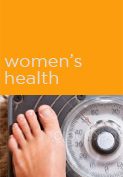I was about 9 years old and mesmerized by the burst of white fire shooting from the sparkler I held in my hand. My parents had cautioned me not to touch those sparks: They were hot! Get this: I actually listened! However, they didn’t say anything about the sparkler still being hot once the pretty sparks faded away. That’s right: I wrapped my hand around the top part, and quickly found out that yes, it was still hot! I now know that sparklers, a seemingly safe firework for kids, can get as hot as 2,000 degrees Fahrenheit — that’s hot enough to melt gold! Not surprisingly, when something’s that hot, it takes a while to cool. I was at my grandma’s, so I’m sure my burnt palm was slathered with butter, an old-fashioned burn treatment that should never be used because it ups the risk of infection. (Treat minor burns instead with cool water, cold compresses (not ice), and aloe; give ibuprofen for pain.) We were a good 45-minute drive from the ER, and apparently I didn’t need medical attention as no one drove me there, and I seem to recall firecrackers and bottle rockets still being lit as I nursed my throbbing hand. Trust me, I haven’t touched the tip of a sparkler since and I’m very good at reminding my children to keep their paws off.
Fourth of July fireworks are a lot of fun, but they can be dangerous, especially for children. Last year, close to 9,000 people were treated for injuries caused by fireworks. Not surprisingly, most injuries occur during the 30 days surrounding July 4. Of the 2,000 people who suffered firework-related injuries, 800 of them (40 percent) were children under the age of 15. Kids ages 10 to 14 are twice as likely to be injured. Even with adult supervision (like I had) injuries, usually to the hands, eyes and head, occur. Sparklers and similar novelties accounted for a third of fireworks-related ER visits in 2009. The American Academy of Pediatrics recommends leaving the lighting to the pros; families should sit back and enjoy the show. The National Fire Protection Association concurs though their concern is fire danger, something my family’s familiar with since our arid state of Colorado is constantly battling wildfires. In 2009, fireworks caused about 18,000 fires (700 of them to homes) resulting in $38 million in property damage. None of this keeps parents (including yours truly) from buying sparklers, cracker snaps and party poppers in grocery stores for our kids’ enjoyment. It’s an American tradition, after all. Since we’re not going to stop buying, we need to practice these fireworks safety tips:
- Don’t let children light their own fireworks. Only adults should play with fire!
- Have constant adult supervision.
- Keep a bucket of water nearby.
- Light fireworks on smooth, flat surface away from homes.
- Don’t try to relight dud fireworks.
- Never throw or point fireworks at other people, animals or homes.
- Soak used fireworks in a bucket of water before disposing of them in the trash.
- Have a phone handy in case you need to call 9-1-1.





